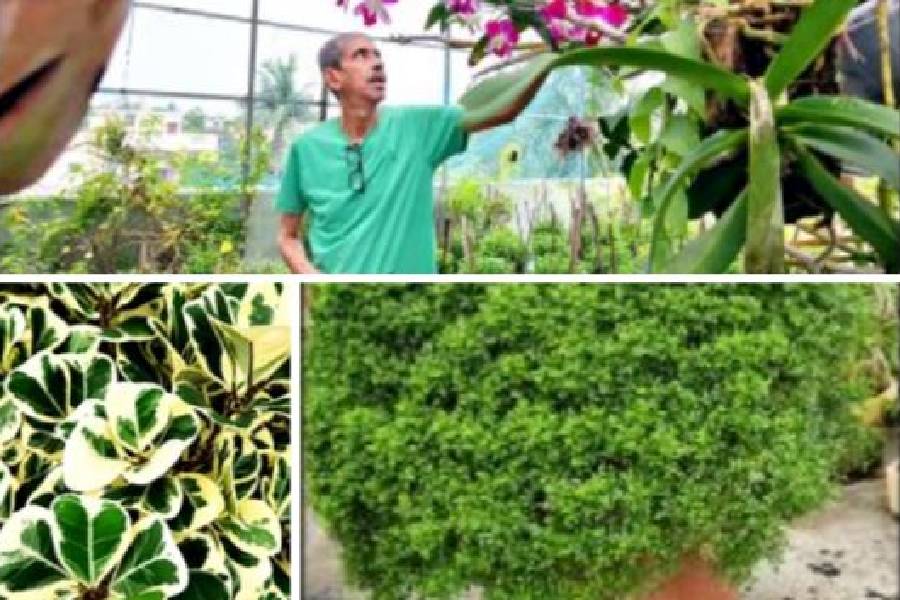Who says leaves are long and green? Visit Debasish Boral’s terrace and find them also in black and red and shaped like spikes, hearts and butterflies. Who says Orchids are tough to grow? Boral’s terrace has more Orchids than you count. He may be a retired IPS officer but in gardening his interest is keen and knowledge sound. Why, he’s more comfortable using scientific names of plants than common ones!
I’ve inherited the love for plants from my mother and as it turns out, my wife and daughter have both studied botany. So besides books, friends and the internet, I turn to their textbooks to learn.
We have some plants around the driveway, like Aglaonema, Golden Juniper and Peace Lily, but most of them are up on the terrace. There are rows of Roses — my favourite plants — Adenium, Hibiscus and the Pompom variety of Chrysanthemums being readied for the winter.
There’s Chinese Kamini, African Violet and Vietnamese Malta. There’s the Oxalis, whose leaves look like purple butterflies. There is Nilmonilata, christened so by Tagore and Camelia, another flower the bard wrote about.
Plants not only provide oxygen and are great stress busters but they are also fascinating! I have a Hoya plant with heartshaped leaves and a Ficus whose leaves have dark green hearts imprinted on a light green background. There’s a creeper with streams of red and yellow flowers called Basar Lata. This one gets its name from floral wedding decorations.
There’s a ZZ Plant variety that sports black leaves and Staghorn Fern, whose leaves look like antlers. I have a huge specimen of this Fern, about 12kg in weight, hanging from a basket. There’s also Walking Iris. This plant is called so as a new plant emerges from the tip of its flower stalk, making it look like the plant is on the move.
Most people disagree but I find Orchids the easiest to grow. When other plants get sick, you typically see their leaves drying out first. It’s later that you realise the root was rotting. But since most Orchids have exposed roots, they’re the quickest and easiest to diagnose when they’re unwell.
The toughest to grow are Roses. At one time I had 100 Rose pots but have reduced them now as it’s too demanding. A friend of ours is a Rose breeder and has, in fact, named a variety Sarmishta, after my wife. Incidentally, there is a beautiful pink Sarmishta Rose in bloom on our terrace as we speak.
I’m sure the plants in my collection would win prizes at flower shows but I don’t participate in any. For me, there’s no greater prize than watching them thrive and smile under my care.
